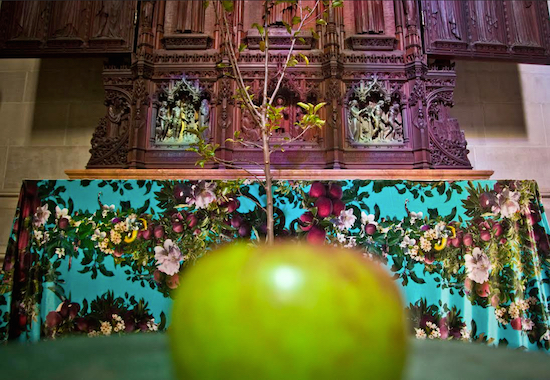NYC art exhibition gives food for thought

"Temptation," part of an installation from the artist-duo David Burns and Austin Young, appears among the works of 30 artists in the multimedia exhibition “The Value of Food: Sustaining a Green Planet” at the Cathedral of St. John the Divine. The exhibition, currently installed in the cathedral’s seven chapels and 14 bays, explores food accessibility, sustainability and other food-related issues and runs through April 3, 2016. AP Photo/Bebeto Matthews
There’s a whole lot of food for thought at a new art exhibition in New York City.
“The Value of Food: Sustaining a Green Planet” explores food production and access, environmental and agricultural sustainability and related issues.
The multimedia exhibition opened last week at the Cathedral of Saint John the Divine, which has a long history of addressing important issues of the day through the arts, programming and community dialogue.
